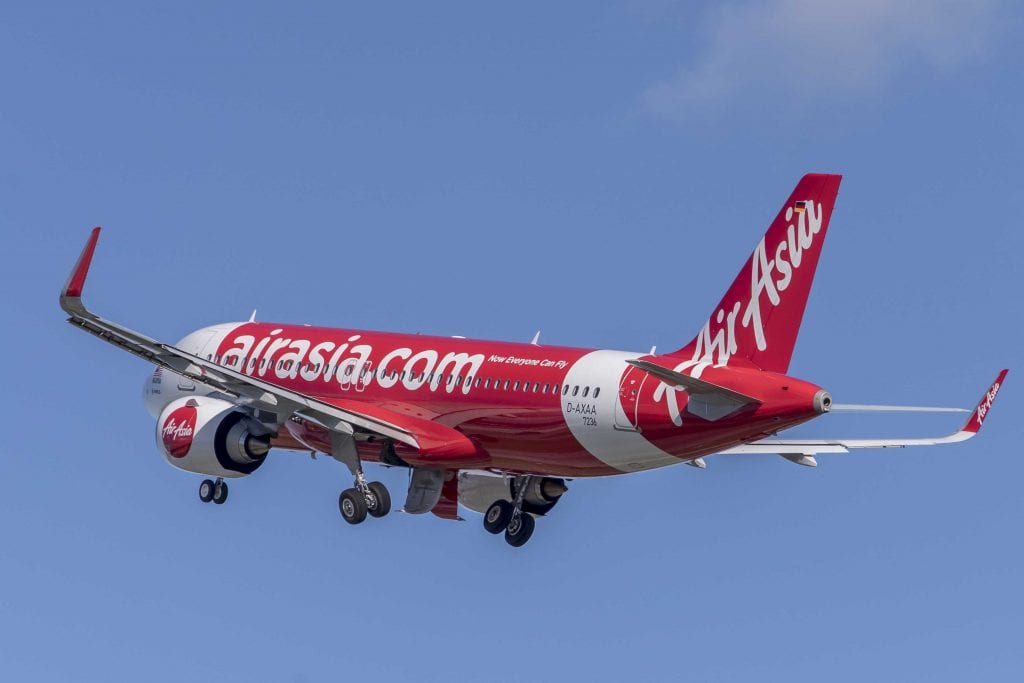AirAsia's Digital Businesses Throw It a Life Preserver

Photo Credit: An AirAsia Airbus A320 taking off Airbus
AirAsia expects a V-shaped recovery for its airlines to begin soon, even as strict travel restrictions remain in much of the group's home region. The group is encouraged by the gradual loosening of restrictions in Indonesia, Malaysia, the Philippines, and Thailand.
Still, capacity across all of its operating groups was just 11 percent of 2019 in the September quarter. This is expected to rise to about 60 percent in the fourth quarter, as restrictions begin to ease. The Philippines began loosening some of its pandemic rules in October, and travel has already begun to rebound. AirAsia expects similar surges at its other operating airlines as restrictions in their home countries relax. Bookings for the year-end holidays are strong, the company said in announcing its third-quarter financial results on Monday.
Load factors across the group were relatively strong, at around 75 percent, but on dramatically lower capacity than in 2019. By comparison, U.S. carriers are reporting load factors about as high on capacity only 10-20 points below pre-pandemic levels.
"As a group, we have taken advantage of the downtime in flying to tap new revenue streams and fully transform ourselves into an investment holding company with a portfolio of synergistic travel and lifestyle businesses," AirAsia Group CEO Tony Fernades said. "In just over a year and a half, Asia Digital Engineering, Airasia Superapp, Teleport, and BigPay have gained significant traction and established a strong presence in our key markets."
In fact, AirAsia's digital products generated 60 percent of the group's revenues in the third quarter. The group had begun to build out its digital and lifestyle business before the pandemic, but its transformation into a digital logistics and lifestyle group accelerated during the lockdown. Earlier this year, the company added ridesharing to its roster of digital businesses, and has added more airlines to its booking portal, the AirAsia Superapp. The user base of its BigPay mobile banking business grew by 170 percent year-over-year, the company said. AirAsia's Teleport cargo and e-commerce shipping subsidiary began operating its first dedicated Boeing 737-800 converted freighter this month.
Cost cutting remains the order of the day at the airlines, however. Employee costs were down 38 percent in the quarter, due to leaves of absence, attrition, and pay cuts. Excluding staff costs, AirAsia reduced other operating expenses by 11 percent compared with last year by keeping spending on IT, marketing, and other airline expenses down, the company said.
AirAsia has raised RM337 million ($80 million) in financing this year, can exercise an up to a RM500 million loan from Malaysian banks, and has access to further loans of up to $150 million. The company got a $100 million investment in its BigPay unit. AirAsia has restructured its aircraft leases with lessors and expects its lease rates to be lower on future leases. "While we continue to evaluate further funding, potential monetization and other corporate exercises, as for now we expect to have sufficient liquidity until year end and throughout 2022," Fernandes said.
AirAsia Berhad reported third-quarter revenues of RM296 million, or 37 percent down from last year and 20 percent down from the second quarter. Airline revenues were down 70 percent from last year, to RM118 million. The Teleport cargo subsidiary tripled its revenues to RM157 million. The group reported a RM281 million loss for the quarter, which narrowed by 38 percent from last year.
